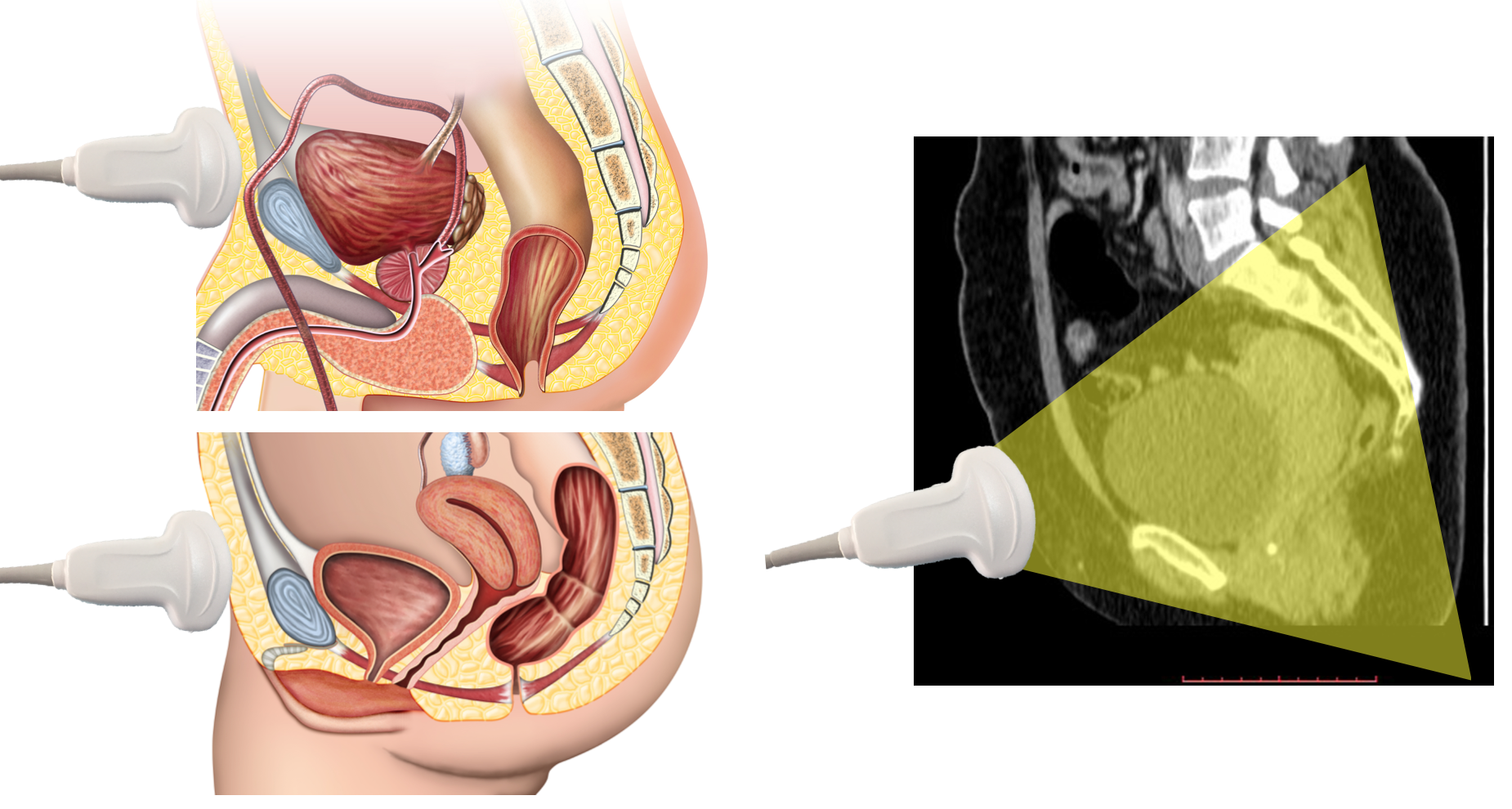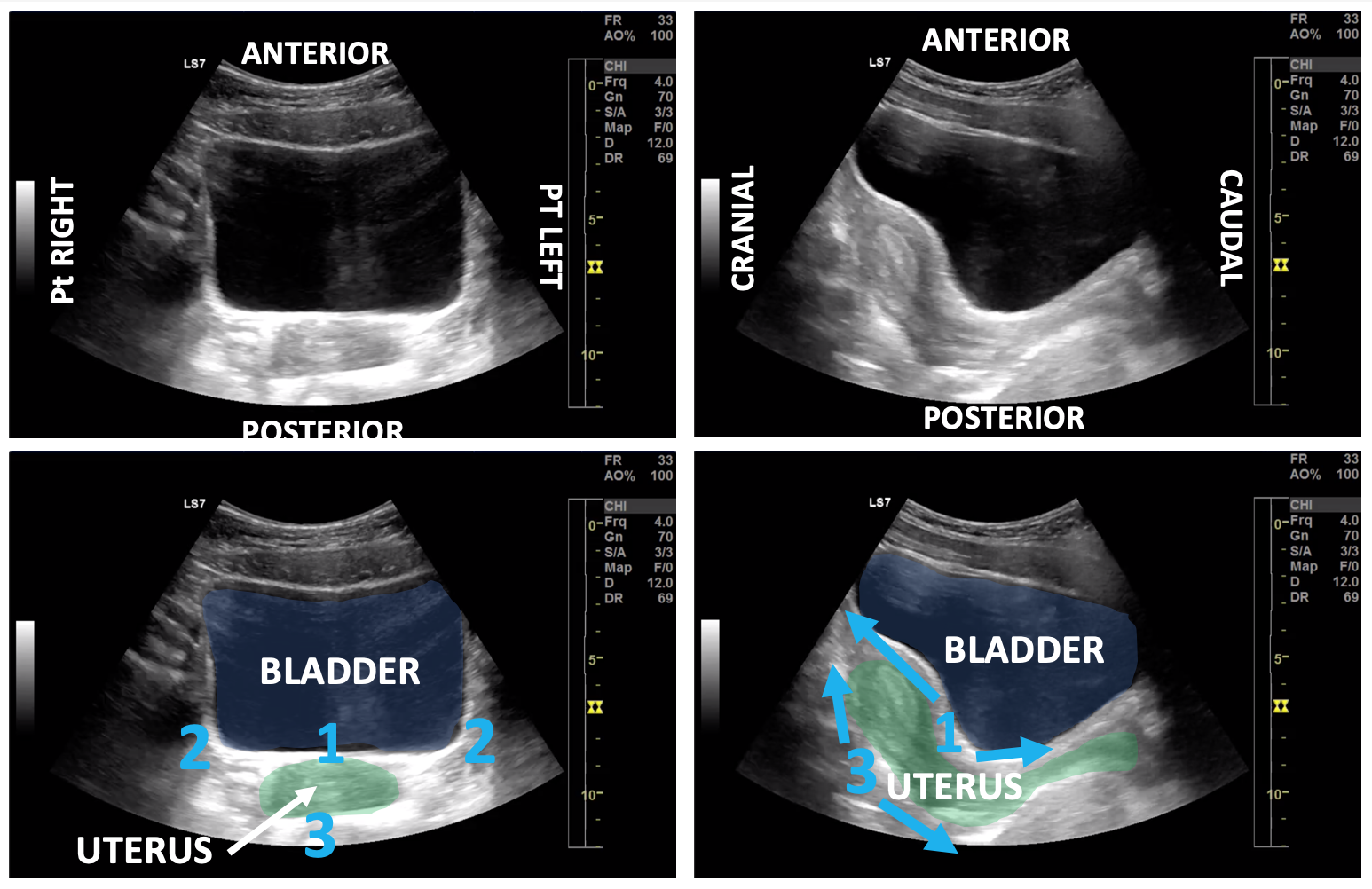The suprapubic view
The pelvis is the most dependent area in the supine patient and the most sensitive view to identify free fluid in the abdomen. In this view, the bladder is used as a window to identify free fluid. It is important to view the pelvis in 2 planes to maximize sensitivity.
Technique (figure 7)

Figure 7: Pelvic scanning technique (remember to scan in two views: transverse and longitudinal)
- Positioning is critical. It is important that the patient remains supine in a flat or slight Trendelenburg position to ensure any fluid collects in dependent areas.
- Place the probe just superior to the pubic symphysis with the probe indicator toward the patient’s right.
- Center the bladder on the screen and fan the entire bladder cranial to caudal.
- Rotate the probe so the indicator points to the patients’ head.
- Fan through the entire bladder from left to right.
Tips
- Remember to fan slowly in both planes paying attention to the area of interest.
- Ensure you allow for adequate depth to view down to the pelvic brim.
- Decrease gain in the far field to account for posterior acoustic enhancement from the bladder in order not to miss anechoic fluid deep to the bladder.
What am I looking at?
When placing the probe in the suprapubic view you are using the bladder as an acoustic window to get transverse and longitudinal cross sections of the patient’s pelvis (figure 8). Fluid often collects in the recto vesicular space in males and in the rectouterine space (pouch of Douglas in females) but a complete investigation involves looking anterior, lateral and posterior to the bladder to ensure that small amounts of free fluid are not missed.

Figure 8: When scanning suprapubic area in the transverse orientation, one is using the bladder as an acoustic window to the bladder, reproductive organs and pelvic brim.

Figure 9: When scanning the suprapubic area in the longitudinal orientation, the bladder is used as an acoustic window to view the reproductive organs and pelvic brim.
What is normal?
Most superficially the bladder is easily identified. Deep to the bladder the reproductive organs are visible: the uterus and cervix in females, and the prostate and seminal vesicles in males. Deep to that lies the rectum and finally the pelvic rim.

Figure 10: Normal suprapubic sonoanatomy, with the bladder highlighted in blue and uterus in green. Areas of interest include the recto vesicular space (1) and posterolateral borders (2) of the bladder and well as the pouch of Douglas in women (3).
Video 6: Pelvis, normal transverse
Video 7: Pelvis, normal sagittal
What is not normal?
Fluid often collects in the recto vesicular space in males and in the rectouterine space (pouch of Douglas in females) but a complete investigation involves looking anterior, lateral and posterior to the bladder and reproductive organs in all directions to ensure small amounts of free fluid are not missed (video8). The pelvis is the most common area for free fluid to collect in supine pediatric patients [11].
Video 8: Pelvis, free fluid
